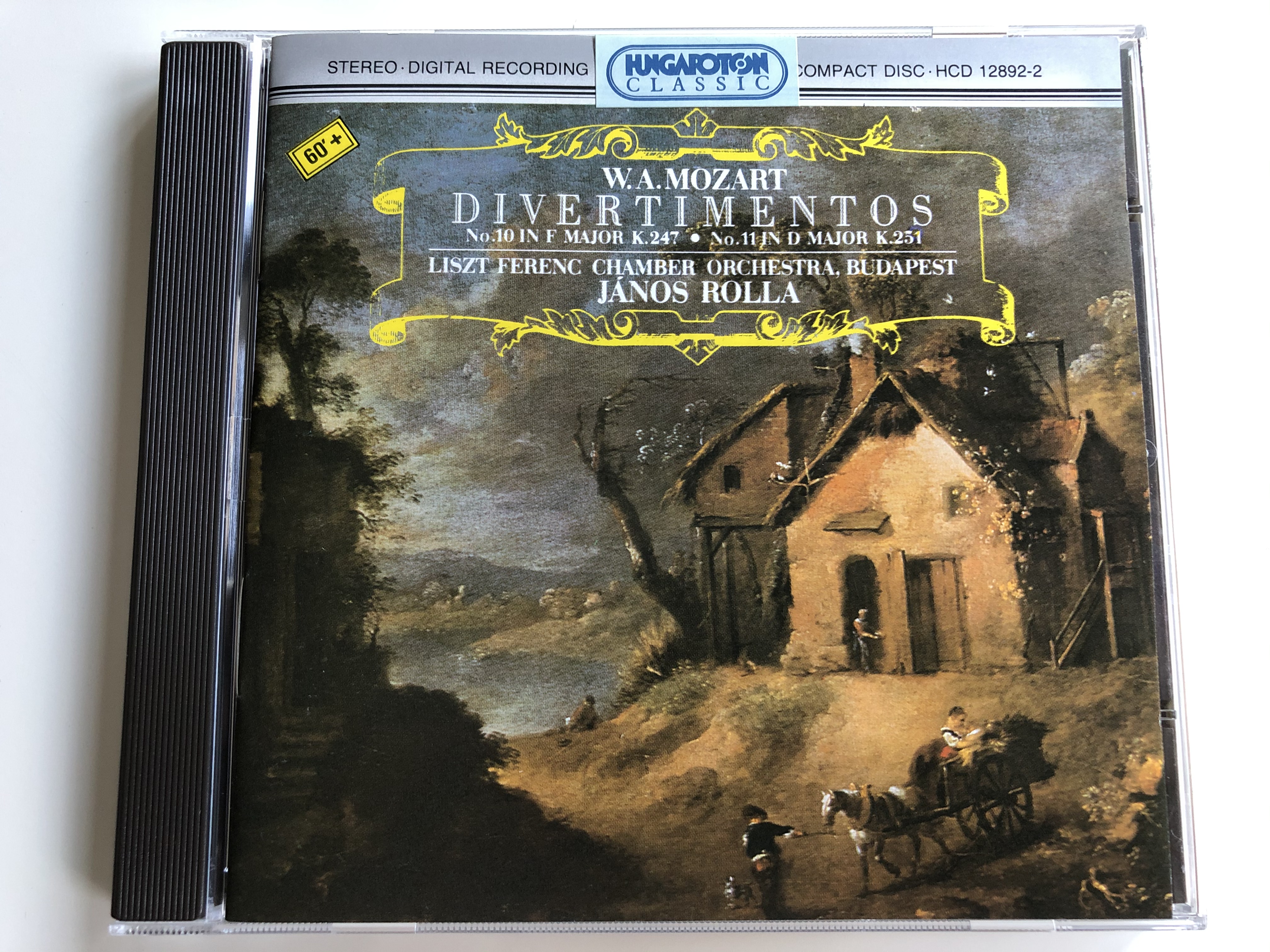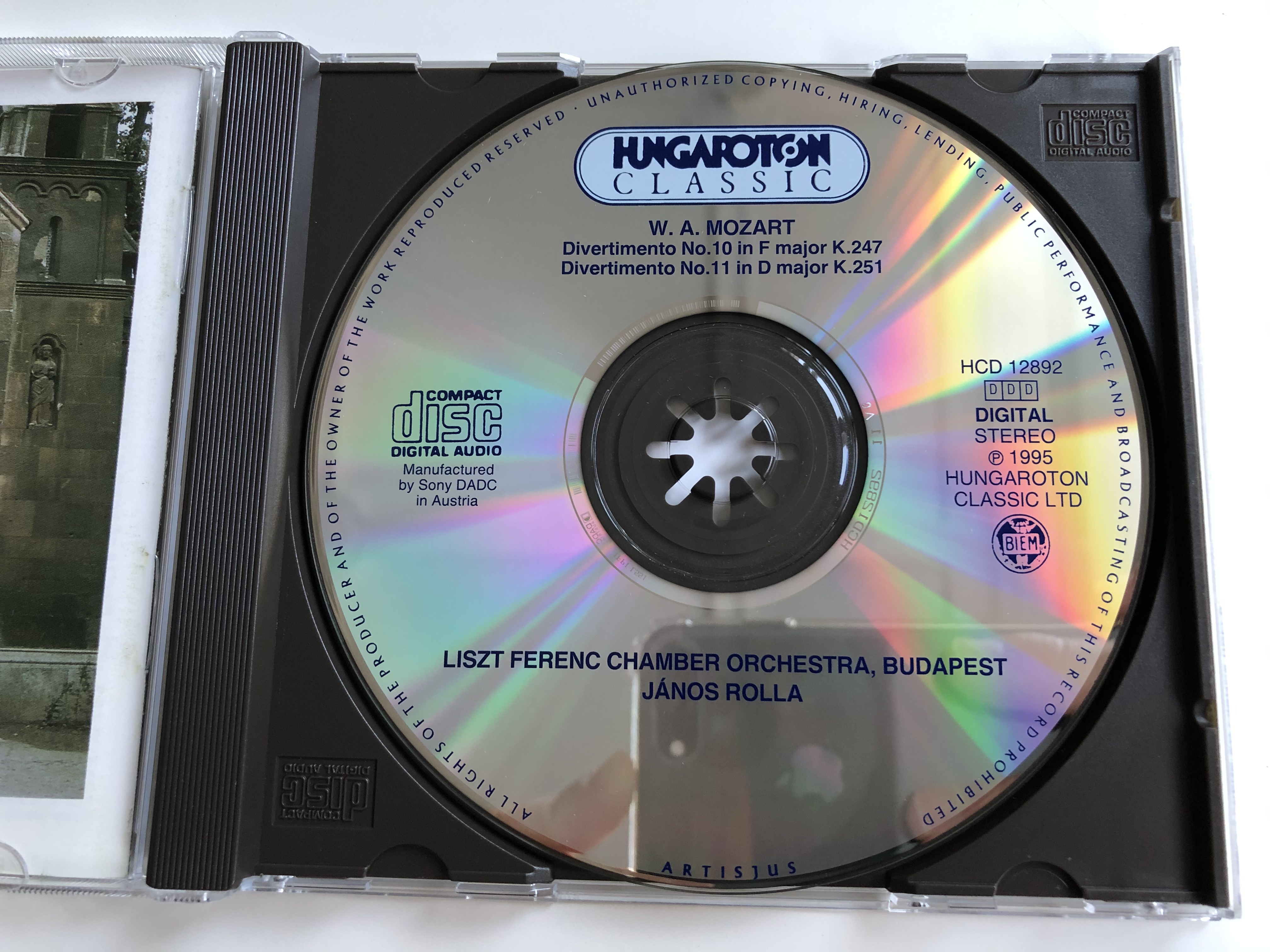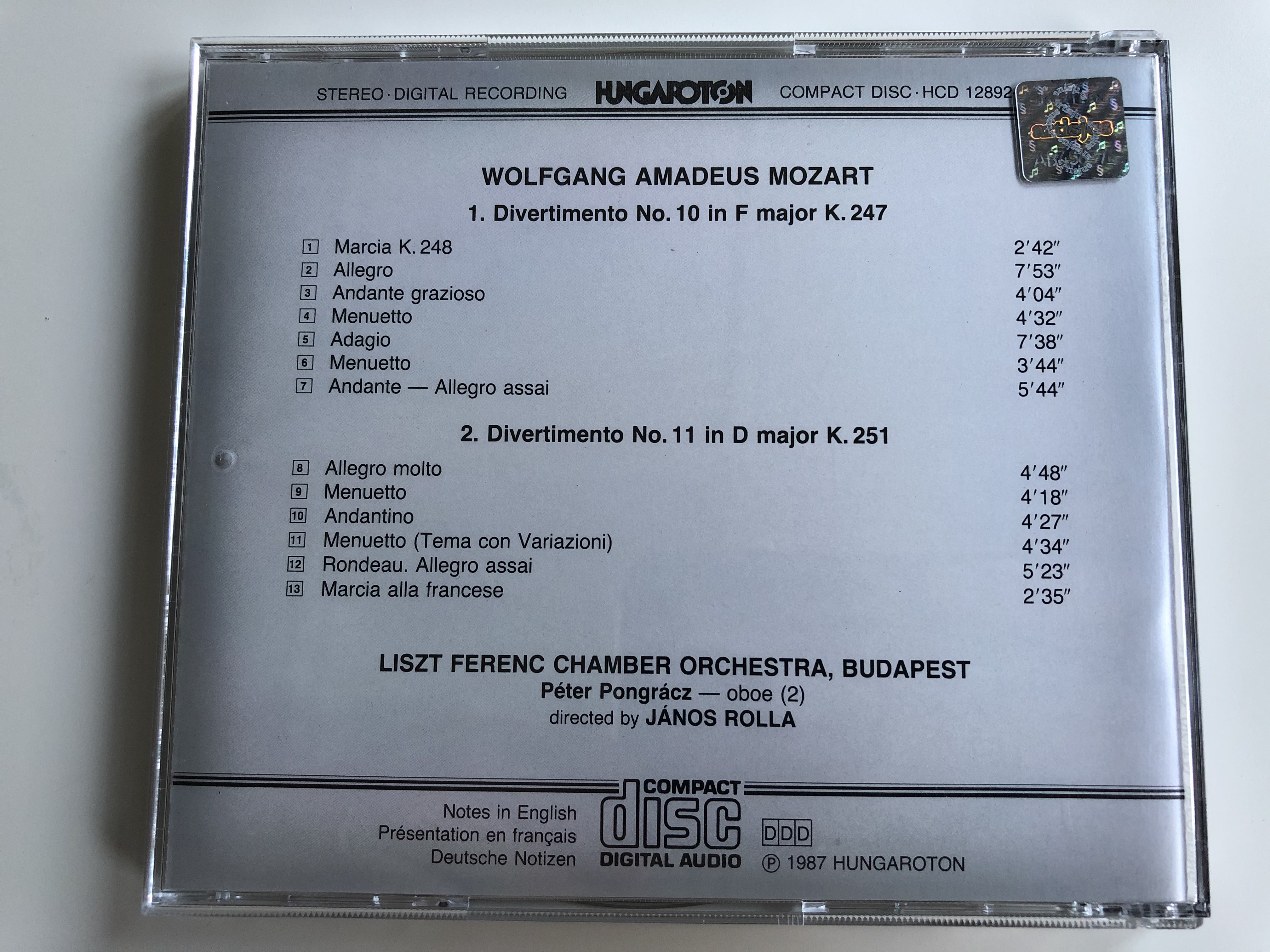Product Overview
W. A. Mozart - Divertimentos - No.10 in F Major K.247, No. 11 in D Major K.251 / Liszt Ferenc Chamber Orchestra, Budapest / Janos Rolla / Hungaroton Classic Audio CD 1995 Stereo
HCD12892-2
℗ 1987 HUNGAROTON RECORDS LTD.
- ASIN : B00005YH5A
Divertimento No. 11 or Divertimento in D, K. 251, is a composition by Wolfgang Amadeus Mozart. It was written in July 1776 in Salzburg, possibly for the name day of Mozart's sister, Nannerl on July 26th or her birthday on July 30th. The work is scored for oboe, two horns, two violins, viola and double bass.
Tracklist:
1. Divertimento No. 10 in F major K. 247
[1] Marcia K. 248 2:42
[2] Allegro 7:53
[3] Andante grazioso 4:04
[4] Menuetto 4:32
[5] Adagio 7:38
[6] Menuetto 3:44
[7] Andante — Allegro assai 5:44
2. Divertimento No. 11 in D major K. 251
[8] Allegro molto 4:48
[9] Menuetto 4:18
[10] Andantino 4:27
[11] Menuetto (Tema con Variazioni) 4:34
[12] Rondeau. Allegro assai 5:23
[13] Marcia alla francese 2:35
- Orchestra - Liszt Ferenc Chamber Orchestra
- Oboe - Peter Pongracz
- Directed by - Janos Rolla
There are six movements:
- Molto allegro (in D major)
- Menuetto (in D major)
- Andantino (in A major)
- Menuetto (Tema con variazioni) (in D major)
- Rondo (Allegro assai) (in D major)
- Marcia alla francese (in D major)
The opening movement is in monothematic sonata form where instead of a true second subject in the dominant key of A major, the first subject appears in A minor. The trio of the first minuet is for strings only and the Andantino third movement is in rondo form. The fourth movement is an unusual mix of minuet and variation form. Here, the three variations serve as the "trios" with the minuet-theme returning da capo after each variation. The first variation features the solo oboe, the second features solo violin and in the third variation, the second makes runs underneath the theme. The horns are silent in all variations. The sixth movement is a rondo where the structure can be represented as "ABABA".




















